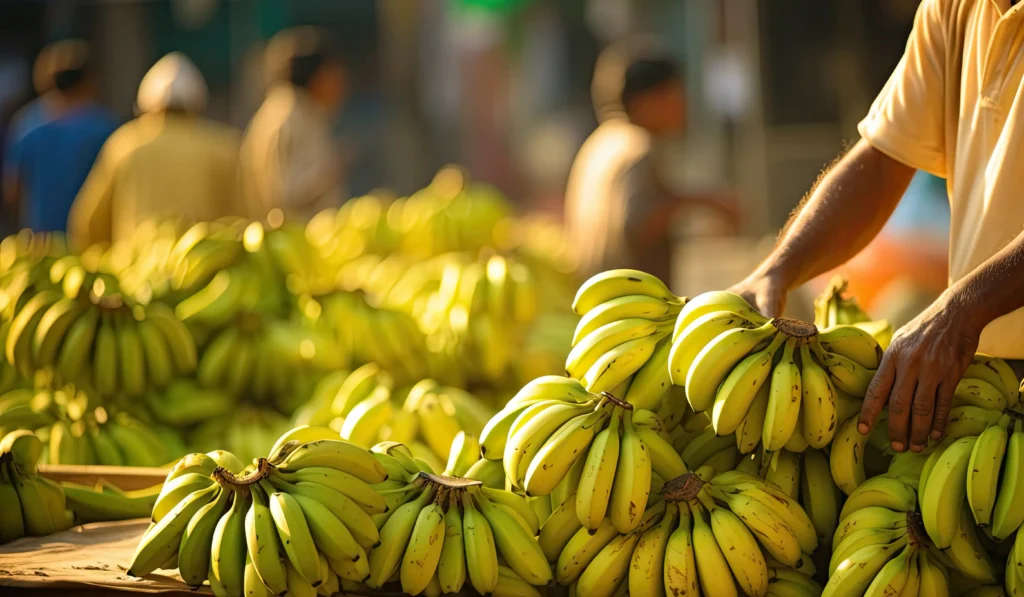The Global Banana Trade: Navigating the World’s Most Popular Fruit Market
Bananas are one of the most widely consumed fruits globally and represent a major agricultural commodity in international trade. With millions of tons exported each year, the banana trade is a complex, dynamic market shaped by diverse growing regions, evolving consumer demands, and intricate supply chains. For importers, exporters, and businesses in the fresh produce industry, understanding the banana trade landscape is crucial for tapping into growth opportunities and navigating challenges.
A Snapshot of the Global Banana Market
Bananas rank as the world’s most exported fruit, with an estimated global trade volume of over 18 million metric tons annually. The market value reaches tens of billions of dollars, reflecting bananas’ role as both a staple food and a key export crop for many tropical countries.
The top banana exporters include countries in Latin America such as Ecuador, Costa Rica, Colombia, and Guatemala, which supply the majority of the global market, especially to North America and Europe. In Asia, the Philippines and India contribute significant production, though India primarily consumes its bananas domestically. African countries like Cameroon, Ivory Coast, and Uganda are emerging as important players, especially in regional markets.
Key Banana Exporting Regions and Their Strengths
1. Latin America and the Caribbean
This region dominates global banana exports, particularly to the United States and Europe. Ecuador is the world’s largest exporter, benefiting from its favorable climate, well-established infrastructure, and large-scale plantations. Costa Rica and Colombia follow closely, with strong logistics networks and established brands.
Strengths include:
High-volume production
Modern plantations with certifications (Fair Trade, Global GAP)
Advanced cold-chain logistics
Access to major ports and proximity to key markets
2. Asia-Pacific
The Philippines stands out as a major exporter in this region, serving markets in Asia, the Middle East, and Russia. India, while a massive producer, is largely focused on domestic consumption and regional exports.
Strengths include:
Diverse banana varieties
Growing investments in modern farming and packaging
Strategic access to emerging Asian markets
3. Africa
African banana exports are growing, with countries like Cameroon, Ghana, and Uganda increasing production to serve regional demand and niche export markets.
Strengths include:
Emerging production hubs with export potential
Increasing adoption of sustainable farming practices
Proximity to European and Middle Eastern markets
Varieties Driving the Global Banana Trade
The banana trade is dominated by the Cavendish variety, prized for its uniformity, shelf life, and transportability. However, other varieties like Plantains (starchy cooking bananas), Red Bananas, and regional types such as Robusta (common in India and Africa) contribute to niche markets and add diversity.
The dominance of Cavendish has led to vulnerabilities — most notably the threat of diseases like Tropical Race 4 (TR4) Panama disease, which is prompting investment in research and diversification efforts worldwide.
Challenges in the Banana Trade
Despite bananas’ global popularity, the trade faces several challenges:
Disease Threats: TR4 fungus poses a significant risk to Cavendish plantations globally. Efforts to breed resistant varieties and improve biosecurity are ongoing.
Price Volatility: Banana prices fluctuate due to weather events, input costs, and shifting consumer preferences.
Sustainability and Ethical Concerns: Increasing consumer demand for fair labor practices, organic farming, and reduced environmental impact is pushing exporters to adopt certifications and transparency.
Logistics and Supply Chain Disruptions: Shipping delays, container shortages, and cold-chain failures can affect freshness and profitability.
Opportunities and Trends Shaping the Future
The global banana trade is evolving with new opportunities:
Premium and Organic Bananas: Growing demand in developed markets for organic and Fair Trade bananas creates niche premium segments.
Diversification: Farmers and exporters are exploring resistant banana varieties and alternative crops to reduce dependency on Cavendish.
Technological Advances: Improved cold-chain logistics, digital traceability, and blockchain applications are enhancing transparency and efficiency.
Emerging Markets: Rising incomes and urbanization in Asia, Africa, and the Middle East are expanding banana consumption and import demand.
How Businesses Can Navigate the Banana Trade
For companies involved in banana import/export, success depends on:
Building strong supplier relationships in key production regions
Staying informed on phytosanitary regulations and certifications
Investing in packaging and logistics to maintain quality and shelf life
Understanding market trends and consumer preferences in target countries
Incorporating sustainability and ethical sourcing into business models
Conclusion: The Banana Trade’s Global Footprint
The banana trade is a vital component of global agriculture and food supply. It links tropical growers to consumers worldwide and reflects broader themes of sustainability, innovation, and market adaptation.
As consumer preferences evolve and challenges arise, the banana trade continues to grow and diversify. For exporters, importers, and traders, staying agile and informed is essential to thriving in this dynamic global marketplace.


